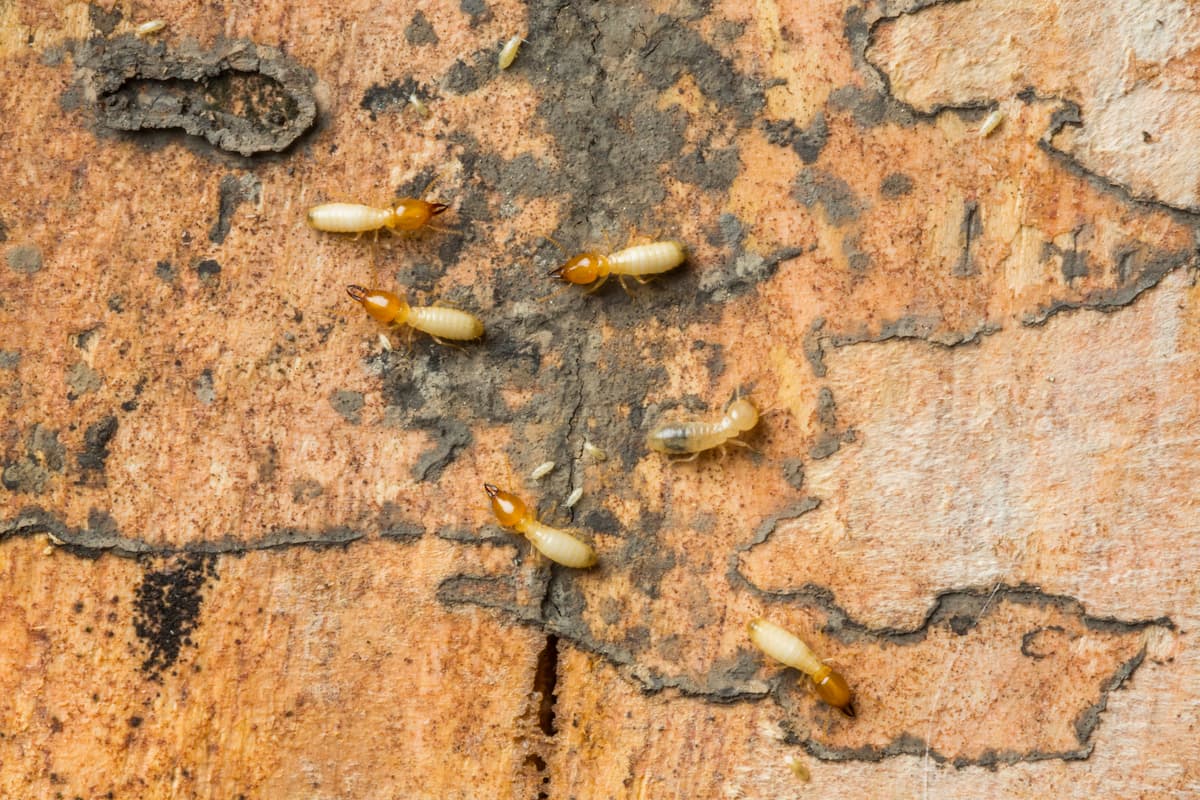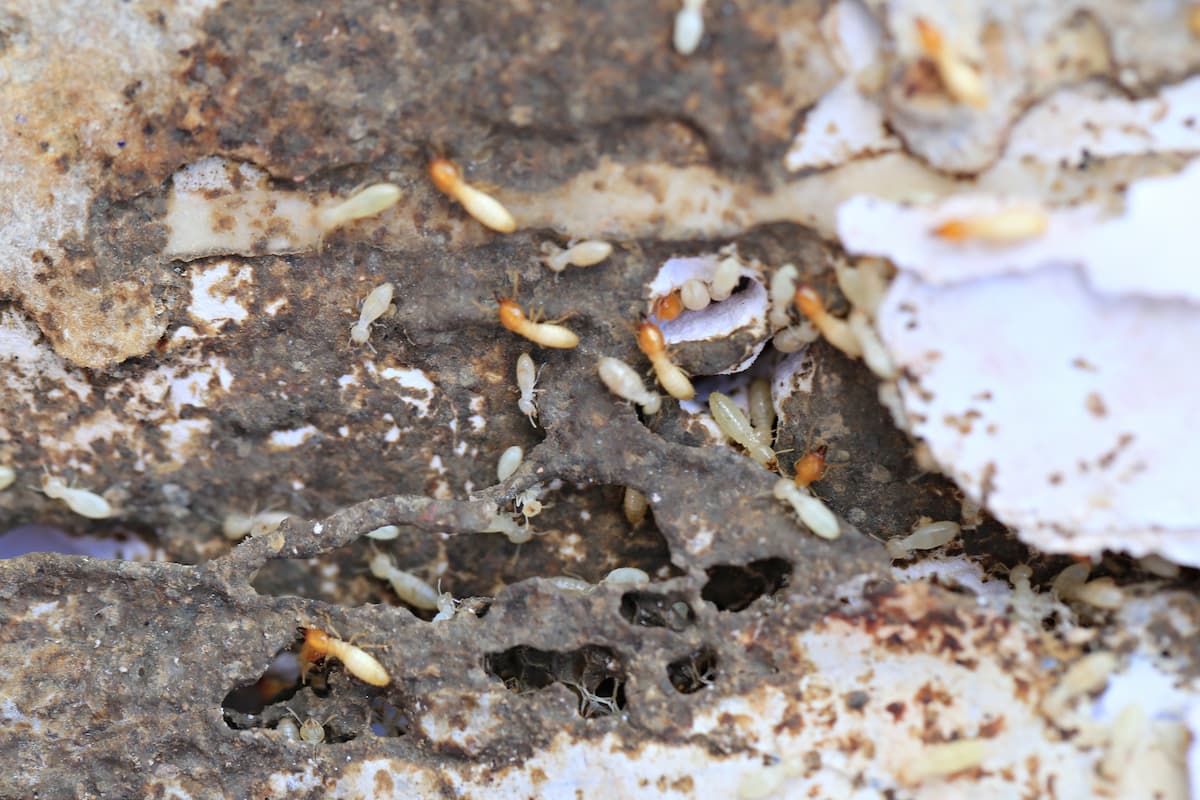Do Termites Make Noise When Eating Wood?
Have you ever heard chewing noises coming from your walls? It could be a sign you have termites.
Termites do make noise while chewing wood, though it is barely audible and easy to miss. They make small clicking noises while chewing, partly because of the wood breaking and partly because of their jaws. Termites also produce other audible sounds, which can help identify their nests.
The Sound of Termites Eating Wood

Any noise a termite makes will be quiet compared to the sounds of larger animals. Some sounds are barely audible, while others are only faint, and some may be easier to hear.
When termites are eating wood, they make an audible clicking sound. Part of it is the wood being broken apart, but some noises are from the termites themselves.
You’ll most often be able to hear this clicking sound coming from the hollow space in your walls. Despite being so small, termites make these audible clicking noises with their mandibles when chewing and when not.
Worker termites, for example, make sounds while eating and moving through tunnels in wood. You may hear a faint rustling sound as well.
Other Sounds Termites Make
Aside from the clicking noise, termites also make a variety of other noises that humans can hear.
Termites can make a fairly loud noise by head-banging, but this isn’t your average rock-concert head-banging.
Termites bang their heads or jaws against wood or tunnels to communicate. They don’t have ears, so they use vibrations to warn each other of danger or signal that they’ve found food.
Moreover, a termite colony is fairly loud. While insects may buzz or make infrequent buzzing noises, a termite colony buzzes constantly.
Their chewing may also be heard as a very low crunching sound.
Faint tapping inside your walls may be another sound made by termites. This could be the head-banging; however, they also give off much lower and slower tapping noises.
Other Indicators of Termite Infestations
Pest experts may use sound to locate termite colonies, and you may hear them very faintly, but there are plenty of other signs of a termite infestation.
The beginning stages of termite damage look very much like water damage. If an area hasn’t gotten wet but appears to have light damage or mold, it could be termites.
You may see sagging drywall, peeling paint, or hollow-sounding wood on your walls. You may also be able to locate small, pinpoint holes in drywall or exposed wood boards.
Floors and ceilings can also suffer from severe structural damage, and excessively squeaky floorboards and sagging ceilings or floors are other indicators of a termite infestation.
The damage can become bad enough for the floor or ceiling to collapse.
Other signs of damage can include maze-like patterns in wood structures or buckling supports.
Look for tiles becoming loose for no reason. Termites introduce moisture to your floor, which can cause tiles to loosen.
Windows and doors that become hard to open or stuck are other indicators of the presence of termites.
Their activities can imbalance the door (or window) on its hinge or rail, making it harder to move.
Finally, you can look for signs of the termites themselves.
Piles of termite pellets (feces) will look much like piles of salt and pepper. Small piles of what looks like sawdust are another indicator.
These are common around small boreholes in wood.
Termite bodies and wings may pile up as the colony goes through its life cycle. You may also see flying swarms of termites around the house or in your yard.
Mud tunnels will mostly appear on your foundation or on wood structures the termites are feeding on. They’re usually small, cylindrical tunnels made of mud and wood pieces that the termites use for traveling around.
How Long Does it Take Termites to Eat Through Wood?

How long it takes termites to eat through wood depends on several factors, including the species of termite, what piece of wood they’re eating away at, and the size of the colony.
Different species of termite consume food sources at different rates. There are roughly 2,000 species of termites with varying degrees of aggressiveness and voracity.
Formosan and hardwood termites are some of the worst. They eat through structures very quickly.
The type of wood can also greatly impact how quickly termites will eat through it. Generally, termites prefer dead and decaying wood – the softer the wood, the better, and the faster they chew through it.
That said, it usually takes months to a few years for a termite infestation to inflict enough structural damage on a home and cause it to collapse.
In your home, termite damage can almost always be repaired. While minor repairs may always be needed, noticing the signs of termites and acting quickly to eliminate them can stop them from doing their worst.
Termites in a garden, however, can ruin plants in a matter of days. A colony that infests a tree may only take weeks or a couple of months to hollow it out and kill it.
How large a colony grows will also impact the speed at which they feed.
Of course, larger colonies require much more food and have many more workers chewing through wood. A large colony causes damage much, much faster than a smaller one.
Leaving termites alone will never get rid of them, and the entire colony must be eliminated to stop them from returning quickly.
Most termite maintenance options take time to work. While it may take them months to do significant damage, it can take weeks for control methods to begin paying off.
It’s important to always be sure that a colony has been eliminated before making any essential repairs.
If you notice the signs of termites in your home, call a pest professional and get an inspection. They can then implement a plan to eliminate the colony and prevent future infestations.
